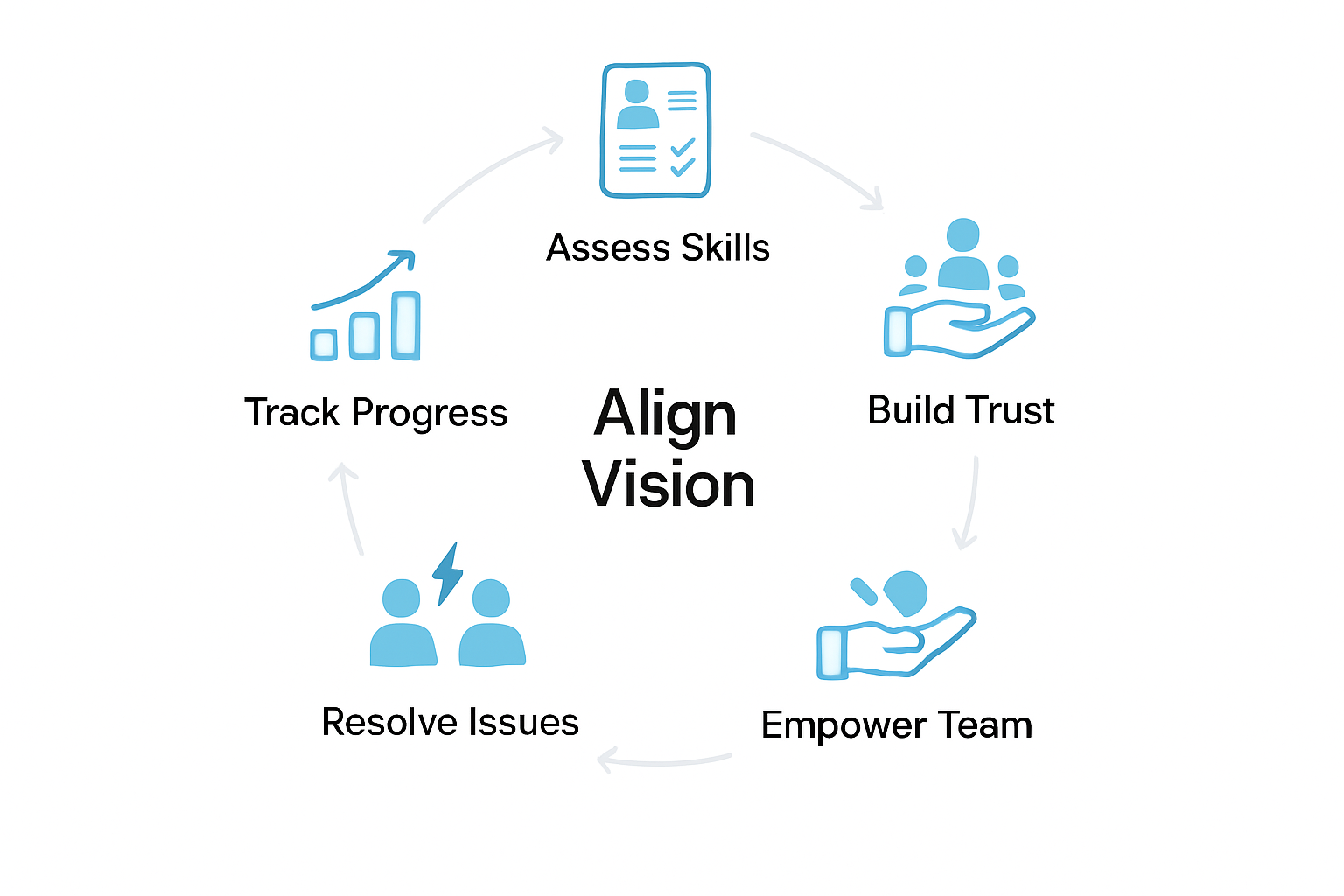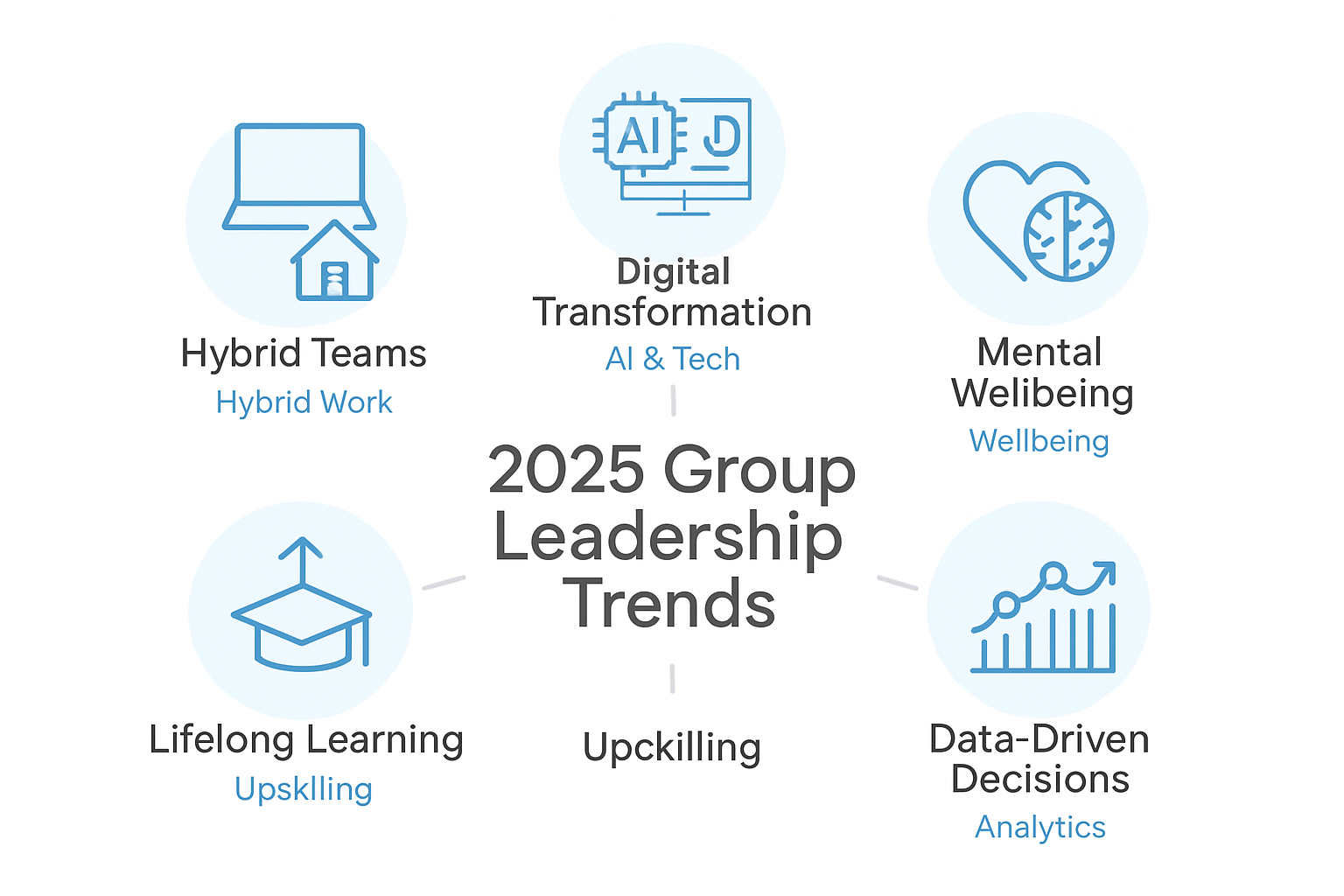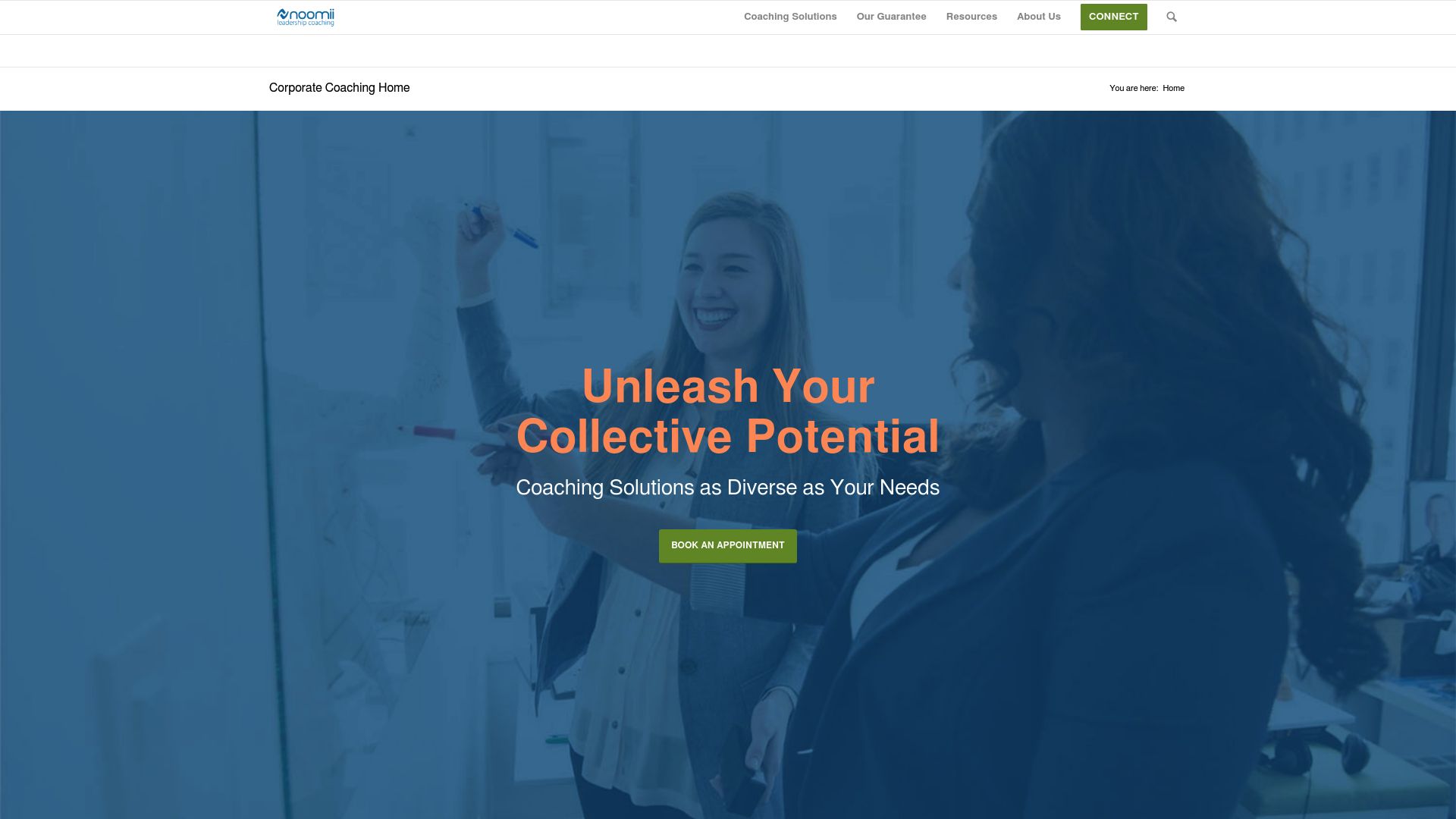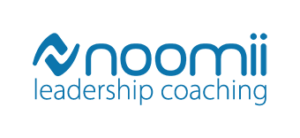Group Leadership Guide: Strategies for Success in 2025
In 2025, the world of group leadership is transforming at lightning speed. Teams are more diverse, distributed, and dynamic than ever before. If you want to stay ahead, adapting your group leadership approach is no longer optional—it's essential.
Why does this matter? Effective group leadership is the engine behind innovation, high performance, and resilient organizations. The right strategies can turn any team into a powerhouse.
This guide delivers proven tactics, emerging trends, and inspiring real-world stories. Ready to elevate your leadership? Dive in and start building team success that lasts.
The Foundations of Effective Group Leadership
Modern organizations are redefining the foundations of group leadership to keep up with rapid changes in the workplace. By understanding how group leadership is evolving, leaders can create cohesive, high-performing teams equipped for 2025 and beyond.
![]()
Defining Group Leadership in 2025
Group leadership in 2025 goes beyond traditional top-down management. It emphasizes shared responsibility, where leaders act as facilitators across collaborative and cross-functional teams.
With the rise of remote and hybrid work, group leadership now requires guiding teams that may never share a physical workspace. This shift demands new approaches for communication and trust.
Unlike past models, group leadership today adapts quickly to changing group dynamics. For example, tech companies are flattening hierarchies and empowering teams to make collective decisions. These changes highlight why group leadership is essential for modern success.
Core Qualities of Successful Group Leaders
The best group leadership starts with honesty and transparency, setting the tone for trust. Exceptional communication skills are vital, especially for distributed teams who rely on digital tools.
Confidence and commitment inspire teams to meet ambitious goals, while adaptability and resilience help navigate uncertainty. Empathy and emotional intelligence foster a sense of belonging in diverse workplaces.
For a deeper dive into the qualities of a great leader, explore resources that highlight these traits in action. Embracing these qualities positions group leadership for lasting impact.
Leadership Styles and Their Impact
Leadership styles shape group leadership outcomes. Authoritarian leaders make quick decisions but may stifle innovation. Democratic leaders engage teams in decision-making, boosting engagement and satisfaction.
Laissez-faire leaders give teams autonomy, which works best with highly skilled groups. In 2025, participative and transformational leadership styles are on the rise, promoting collaboration and adaptability.
Recent data shows democratic group leadership correlates with higher team engagement. Many organizations shifted to flexible styles post-pandemic, adapting to new workforce expectations.
The Role of Diversity and Inclusion in Group Leadership
Diversity and inclusion are critical for effective group leadership. Inclusive leaders encourage innovation by valuing varied perspectives and experiences.
Building psychologically safe environments helps teams speak up and share ideas. Addressing unconscious bias and promoting equity are ongoing priorities.
Studies show diverse teams outperform homogenous ones in problem-solving. One multinational team, for instance, credits their success to group leadership focused on inclusion and open dialogue.
Common Challenges Facing Group Leaders Today
Group leadership faces unique challenges in the modern workplace. Navigating conflict and having tough conversations are daily realities.
Managing performance and engagement across remote or hybrid teams adds layers of complexity. Leaders must balance authority with collaboration, ensuring everyone feels heard.
Leadership coaching case studies often cite these hurdles, underscoring the need for continuous learning and adaptation in group leadership.
Step-by-Step Strategies for Group Leadership Success
Achieving group leadership excellence in 2025 means following a clear, actionable process. These six steps will help you unlock your team’s full potential, whether you’re leading in-person, remotely, or in a hybrid environment.

Step 1: Assessing Group Strengths and Weaknesses
Start your group leadership journey by understanding the unique talents within your team. Use skills inventories and personality assessments to map out each member’s capabilities. Tools like 360-degree reviews and regular feedback sessions can reveal hidden strengths and areas for growth.
A successful group leadership approach includes identifying capability gaps and realigning roles where necessary. For example, a marketing team might discover untapped creative strengths and shift responsibilities accordingly. Research shows that teams with a clear grasp of their strengths are 30% more productive.
Consider creating a simple table to summarize your findings:
| Team Member | Top Strength | Area to Develop |
|---|---|---|
| Alex | Data Analysis | Presentation |
| Priya | Creative Design | Time Management |
| Jordan | Communication | Technical Skills |
This strategy ensures your group leadership is data-driven and tailored to your team’s real needs.
Step 2: Setting a Clear Vision and Shared Goals
Group leadership thrives on clarity and direction. Facilitate collaborative goal-setting sessions that invite every team member’s input. Aligning group objectives with the broader organizational mission ensures everyone is moving in the same direction.
Use storytelling to communicate your vision, making it relatable and inspiring. When a tech startup aligns product teams with the company’s mission, for instance, motivation and focus soar. Vision-driven teams consistently report higher satisfaction and engagement.
Practical tips for this step:
- Host quarterly vision workshops.
- Use visual roadmaps to track progress.
- Encourage team members to share personal goals.
Clear vision is the foundation of effective group leadership, creating purpose and unity.
Step 3: Fostering Open Communication and Trust
Trust and transparent communication are the bedrock of group leadership. Regular check-ins, feedback loops, and digital collaboration platforms like Slack or Teams make it easy to keep everyone connected, especially in remote or hybrid settings.
Encourage active listening and psychological safety, ensuring all voices are heard. Remote teams that prioritize open updates see stronger alignment and morale. Data shows that high-trust teams achieve 50% better retention rates.
If you want to accelerate this process, structured leadership coaching for teams can provide proven frameworks to build trust and facilitate difficult conversations.
By embedding trust into your group leadership strategy, you create an environment where ideas and innovation can flourish.
Step 4: Delegating Effectively and Empowering Team Members
Effective delegation is essential for group leadership success. Assign tasks based on each member’s strengths, setting clear expectations and accountability from the outset. Avoid micromanagement by providing guidance while allowing autonomy.
Project managers often delegate ownership of agile sprints, which boosts innovation and engagement. Empowered teams feel more invested in their work, leading to faster problem-solving and creative thinking.
Key delegation tips:
- Match tasks with skill sets.
- Set measurable outcomes.
- Recognize achievements quickly.
Group leadership that empowers its members creates a culture of growth and shared ownership.
Step 5: Managing Conflict and Navigating Tough Conversations
Conflict is inevitable in any group leadership scenario, but how you manage it makes all the difference. Use proven mediation techniques and feedback frameworks to address disputes constructively. When performance issues arise, approach them with empathy and clarity.
A sales team, for example, may resolve quota disagreements through facilitated dialogue, restoring trust and focus. Teams with formal conflict resolution training are 35% more effective.
Consider these tactics:
- Hold neutral ground meetings.
- Use structured feedback models (like SBI: Situation-Behavior-Impact).
- Document agreements for accountability.
Strong group leadership turns challenges into opportunities for growth and alignment.
Step 6: Monitoring Progress and Adapting Strategies
Continuous improvement is the hallmark of great group leadership. Set clear KPIs and regularly track team performance using dashboards or agile boards. Solicit feedback and be willing to adapt your approach based on results.
Operations teams, for example, iterate on process improvements to stay competitive. Adapting your leadership style to team needs ensures lasting success.
Tips for this step:
- Schedule monthly reviews.
- Celebrate small wins.
- Stay open to new tools and processes.
Group leadership is not static; it evolves with your team, driving sustained results and resilience.
Emerging Trends in Group Leadership for 2025
The landscape of group leadership is shifting rapidly as organizations adapt to new realities in 2025. Leaders must stay ahead by embracing trends that redefine how teams connect, collaborate, and excel. Let’s explore the most influential trends shaping group leadership this year.

The Rise of Hybrid and Remote Teams
Hybrid and remote work are fundamentally altering group leadership approaches. Leaders now manage distributed teams spanning multiple locations and time zones. Success hinges on clear expectations, flexible policies, and the use of digital tools that foster real-time and asynchronous collaboration.
For group leadership to thrive, leaders must create inclusive virtual environments and ensure every voice is heard. Asynchronous workflows, like shared project boards and messaging platforms, keep teams aligned. For instance, global product teams often leverage these strategies to maintain productivity.
By 2025, 70% of organizations are projected to embrace hybrid models. This shift requires group leadership to focus on engagement, trust, and adaptability to drive performance in diverse, dispersed teams.
Digital Transformation and Leadership Technology
Digital transformation is revolutionizing group leadership by introducing advanced tools and analytics. AI-driven platforms now help leaders monitor team performance, predict challenges, and personalize development plans. Virtual reality and simulation technologies make leadership training more immersive and accessible.
Integrating performance dashboards enables data-driven decisions and real-time feedback, helping group leadership stay agile. Companies using these technologies adapt faster to change and build resilient teams. For a deeper dive into how digital trends are shaping the future, check out the Top 5 Leadership Trends of 2025.
By leveraging technology, group leadership can unlock new efficiencies, foster innovation, and maintain a competitive edge in a digital-first world.
Focus on Mental Health and Wellbeing
Mental health and wellbeing are now central to effective group leadership. Leaders must recognize signs of burnout and proactively support their teams through flexible work arrangements, access to wellness programs, and open conversations about stress.
Implementing mental health initiatives, such as employee assistance programs or mindfulness workshops, can significantly boost morale and engagement. HR teams leading these efforts often see measurable improvements in productivity.
In 2025, 60% of employees say wellbeing is a top factor in choosing where to work. Group leadership that prioritizes wellbeing not only retains talent but also builds a culture of trust and resilience.
Emphasis on Lifelong Learning and Upskilling
Continuous learning is indispensable for group leadership success in 2025. Leaders are investing in development programs, online courses, and peer mentorship to keep teams adaptable and future-ready.
Organizations now offer leadership micro-credentials and encourage knowledge sharing through collaborative platforms. This approach helps group leadership nurture innovation and address evolving skill gaps.
Teams with regular upskilling opportunities outperform peers by 25%. By fostering a culture of learning, group leadership ensures teams remain relevant and motivated in a rapidly changing environment.
Data-Driven Leadership Decisions
Data analytics is transforming how group leadership measures, evaluates, and optimizes team performance. Leaders now use predictive modeling to anticipate challenges, track engagement, and refine strategies for greater impact.
Performance dashboards and pulse surveys help set clear KPIs and monitor progress. Finance and operations teams leveraging data can quickly identify bottlenecks and realign resources.
Research shows that data-driven group leadership enables organizations to make decisions five times faster. Embracing analytics empowers leaders to act with confidence and agility, ensuring ongoing success.
Real-World Examples and Case Studies
Real-world stories bring group leadership principles to life. By examining diverse teams and organizations, we see how group leadership adapts to modern challenges and drives measurable results. Each case below highlights a unique path to group leadership success, providing actionable insights for your own journey.
Case Study: Transforming Team Performance Through Group Coaching
A global fintech company faced stagnant team performance and low morale. Leadership shifted from individual coaching to a group coaching model, enabling members to share perspectives and solve problems collectively.
Facilitated sessions helped uncover communication gaps and clarify shared goals. By applying team coaching best practices, the team built stronger relationships and accountability. Over six months, productivity and engagement scores increased significantly, proving that group leadership can unleash untapped potential when coaching is collaborative.
Case Study: Navigating Change Management in a Hybrid Environment
During a major restructuring, an operations department needed to realign roles and processes for a hybrid workforce. Leaders focused on transparent communication and regular feedback, using virtual town halls and anonymous surveys.
This group leadership approach enabled employees to voice concerns and suggest improvements. The team adapted quickly, reduced turnover, and reported higher satisfaction. By prioritizing flexibility and trust, leaders guided the group through uncertainty and built a culture of resilience.
Case Study: Building a Culture of Inclusion and Innovation
A multinational tech firm launched initiatives to foster diversity and belonging. Leadership set clear expectations for inclusive behavior and provided unconscious bias training.
Open forums and mentorship programs encouraged diverse voices and creative thinking. The result? Group leadership drove measurable gains, with the team generating 19% more revenue from new products. Inclusion wasn’t just a value—it became a strategic advantage for innovation.
Case Study: Conflict Resolution and Team Alignment
A sales team struggled with internal disputes over quotas and recognition. Leadership intervened with structured dialogues and conflict resolution frameworks, creating space for honest feedback.
By referencing rebuilding team trust after conflict resources, the group rebuilt trust and aligned on shared objectives. Group leadership empowered members to address issues directly, leading to restored morale and improved results. Teams trained in conflict management became 35% more effective.
How Noomii Corporate Leadership Program Drives Group Leadership Success
Noomii’s evidence-based solutions transform group leadership at scale. Their process begins with a rigorous assessment of group strengths, then matches teams with expert coaches for targeted development.

Organizations using Noomii report breakthroughs in engagement and the resolution of toxic leadership patterns. The program aligns with compliance and governance needs, making it a top choice for Fortune 500 companies and government agencies seeking sustainable group leadership transformation.
Measuring and Sustaining Group Leadership Success
Measuring and sustaining group leadership success is a dynamic process. It requires clear metrics, a culture of learning, and intentional strategies to keep teams motivated and future-ready. Let’s explore the practical ways leaders can ensure group leadership delivers lasting impact.
Key Performance Indicators for Group Leadership
To measure group leadership, define KPIs that reflect productivity, engagement, and retention. These metrics offer objective ways to monitor progress and guide improvement.
Common KPIs include:
- Team productivity rates
- Employee engagement scores
- Retention and turnover statistics
Set benchmarks for each KPI and use tools like pulse surveys and feedback platforms for ongoing assessment. For example, organizations tracking morale through regular surveys see teams with clear KPIs achieving 20% higher goals. By aligning KPIs with group leadership objectives, leaders can quickly spot trends and pivot as needed. Interested in the latest measurement practices? See 5 Leadership Trends That Will Help To Shape 2025 for insights on evolving leadership metrics.
Building a Culture of Continuous Improvement
Sustaining group leadership success means embedding continuous improvement into team routines. Regular reflection and learning cycles drive innovation and prevent stagnation.
Key actions include:
- Holding weekly retrospectives to review wins and setbacks
- Encouraging open feedback and knowledge sharing
- Celebrating both achievements and lessons learned
Agile teams often use structured improvement sessions to boost creativity. Embedding feedback into daily work keeps momentum high. Insights from Leadership Trends 2025: Key Shifts Impacting Executives & Organizations highlight that organizations committed to improvement outperform competitors. Group leadership thrives when improvement is seen as a shared responsibility.
Leadership Development Programs and Resources
Effective group leadership is fueled by ongoing development. Both formal and informal learning opportunities ensure leaders and teams stay ahead of change.
Options include:
- Peer coaching and mentorship circles
- Workshops and leadership cohorts
- External certifications and online courses
Many companies invest in digital platforms to deliver leadership content at scale. For example, company-sponsored cohorts provide structured learning, while informal peer coaching offers real-time insights. Research shows investment in leadership development yields a 7x ROI, making it a strategic priority for sustaining group leadership excellence.
Sustaining Motivation and Engagement Over Time
Long-term group leadership success depends on keeping teams motivated and engaged. Recognition, growth opportunities, and transparent communication are key drivers.
Strategies to sustain engagement:
- Recognize team achievements with awards or shout-outs
- Offer clear career paths and rotational programs
- Maintain open, honest communication at all levels
Engaged teams are 40% less likely to experience turnover. By prioritizing motivation, leaders build loyalty and energy. Group leadership is most effective when everyone feels valued and connected to the mission.
Future-Proofing Your Group Leadership Approach
Adapting to change is essential for group leadership longevity. Leaders must anticipate trends, build resilience, and foster agility within their teams.
Tactics for future-proofing include:
- Scenario planning for emerging risks
- Upskilling to match evolving demands
- Creating a culture that embraces uncertainty
Leaders who scan for new skills and trends ensure their teams remain relevant. Future-ready teams adapt twice as fast to market shifts. By weaving adaptability into the fabric of group leadership, organizations stay competitive and resilient.


Leave a Reply
Want to join the discussion?Feel free to contribute!